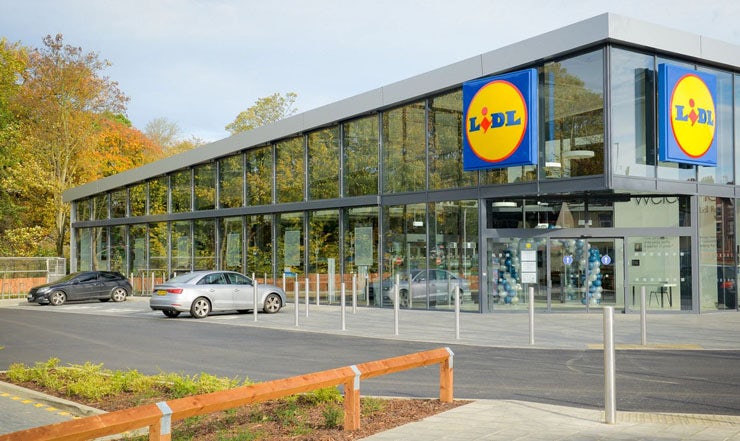Lidl: Programmatic is new, shiny and overvalued
The discounter’s head of media Sam Gaunt says the marketing industry is “guilty of overselling programmatic” and that the brand gets much better ROI from press, radio and TV advertising.

Lidl has experienced a rapid ascent over the last five years, with it recently overtaking Waitrose to become the UK’s seventh biggest supermarket.
At the same time, its marketing spend has soared. In 2013, the German discounter invested just £28m in advertising. Yet, even though there are still three months of the year to go, Lidl has already spent £75m in 2017. This growing investment has allowed it to grow its brand perception around quality making the middle classes reconsider shopping with a discounter.
But despite its advertising investment consistently growing year on year, Lidl’s head of media Sam Gaunt is still pessimistic about investing too much of this budget into programmatic. Speaking at the Festival of Marketing today (4 October), Gaunt said too many brands are overspending on programmatic without a clear strategy.
“The marketing industry has been guilty of overselling programmatic,” he explained. “There’s a large amount of over-investment by marketers in the programmatic sphere who sit within brands that have no real strategy. They don’t know how much they are spending on programmatic or where this advertising is going.”
Why it isn’t yet profitable enough for Lidl
While he wouldn’t divulge specific numbers, Gaunt produced a chart that showed how Lidl’s digital advertising – which programmatic sits within – is still dwarfed by radio, TV and print when it comes to ROI.
He added: “All marketing is about building your brand but also driving sales and programmatic isn’t doing the latter for Lidl just yet.
“For all the debate around fraud and viewability, the reality is programmatic is very expensive. It’s a premium media. When you stack up the cost of it with traditional media and then weigh up the impacts, it can be hard to justify.”
There’s still a long way to go until we reach that nirvana of really understanding how programmatic can work effectively.
Sam Gaunt, Lidl
Gaunt said because people typically consume programmatic advertising with the sound off, they are more likely to get distracted. TV, as a comparison, is “more impactful” because the sound is on, which makes it more powerful at holding someone’s attention, he added.
When asked whether bringing programmatic technology or media expertise in-house to improve programmatic efficiency – something brands such as Pernod Ricard have done – could help lower these costs, Gaunt immediately shot the idea down: “There is a head count attached to taking it in-house. That then has to fit into our costing.
“Not having it in-house gives Lidl flexibility to dial up and dial down spend on programmatic when necessary. The moment you bring in expensive programmatic talent, there’s the risk you don’t make enough use of them.”
READ MORE: How marketers are stepping up to take control of media
The ‘programmatic nirvana’
One of programmatic advertising’s biggest benefits is the fact it removes a “premium for spending money on regional targeting,” according to Gaunt. However, ultimately, he feels programmatic still has a long way to go in justifying itself.
He concluded: “There’s no doubt the future of media spend revolves around programmatic advertising and buying. But, at the moment, the problem with programmatic is it is new, shiny and overvalued.
“I’m not trying to sound pessimistic but trying to make the point that there’s still a long way to go until we reach that nirvana of really understanding how programmatic can work effectively and generate an impressive ROI.”







At last – someone with the balls to be the Voice of Reason!
While I agree with a lot of his statements, I do think that programmatic advertising is not suitable for every business. Although they have a defined content strategy on their website, Lidl’s business model is brick and mortar based, therefore you could argue it’s return on investment is going to be limited. For e-commerce businesses, however, the ROI would arguably be greater and more measurable – especially when using attribution tools – as you can follow a potential customer from their first click to eventually making a buying decision on a website.
Peter – I agree… at brand level TV and Radio works for Lidl, but you are spot on in terms of how they measure success – is it through brand surveys and recall?
Also, do they know enough about the demographic splits of their customers, considering that they don’t have a loyalty/clubcard style program?? Brand surveys are too broad brush to measure exactly who shops with them and who doesn’t. Programmatic works well for brands, it might not be in the media mix for Lidl, but thats not to say its “wrong” or doesnt work or too expensive.
The Programmatic Digital Display industry is overly fixated on attribution in an attempt to make every ad a DR campaign. This totally ignores the brand building effect of advertising, which should be measured using other tools. I may see an ad today but not click on it, and then buy a week or a month later. No credit is given for that in Digital. In other words, just because you can measure it doesn’t always mean you should because you’re only getting a partial picture of the campaign’s performance.